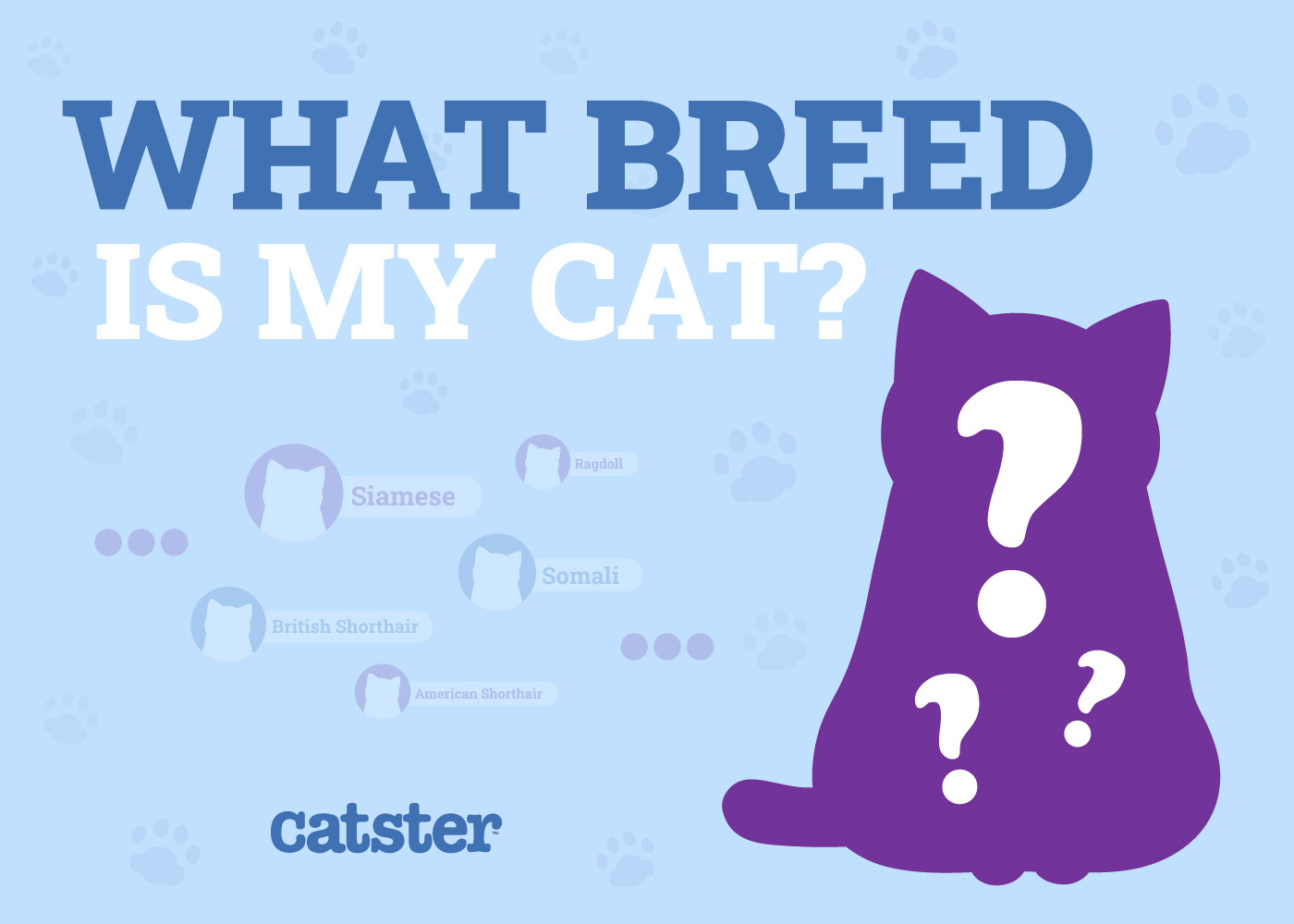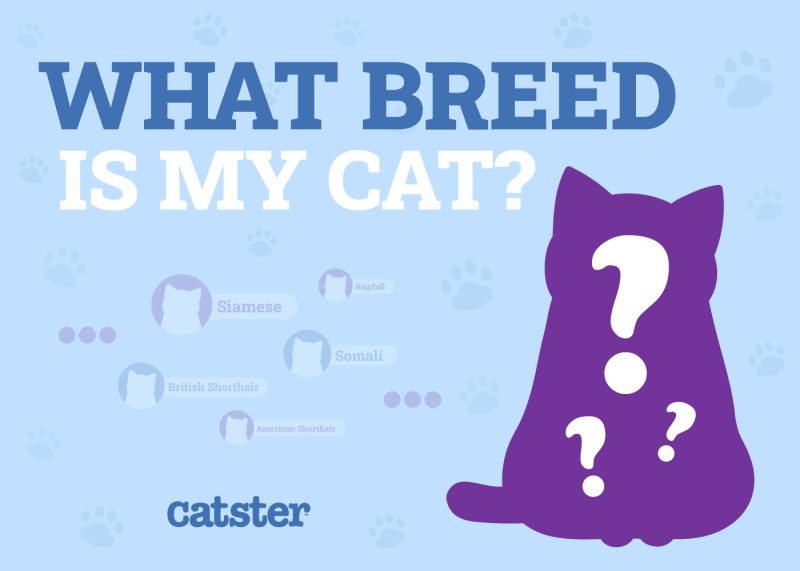Click to Skip Ahead
According to The International Cat Association, there are more than 70 officially recognized cat breeds. Of course, not every cat is purebred, so any particular feline could be a mix of two or more of these official breeds, making it exceptionally hard to identify a cat whose breed is unknown. But cat lovers are commonly adding cats to their family that they know little to nothing about. Anyone who knows a feline fanatic has almost certainly seen them add a feral kitty to their collection at one point or another!
If you purchase a cat from a breeder or pet store, you’ll know exactly what type of kitten you’re getting. But if you adopt it from a shelter or off the street, you could be holding a mixed bag of traits with no specific breed to point to. Even if your cat is purebred, identifying its breed can be tricky, as no two cats are identical. Luckily, you’ve found this identification guide, which will help you determine which breed of kitty you have without the need for genetic testing!
In truth, there are far too many breeds for us to list the traits of each one but with a few simple categories, you should be able to narrow down your investigation. In this guide, we will help you identify specific traits about your cat that you can use to create a search query to uncover the breed of your beloved cat hopefully!
Cat Traits to Identify Breed
Take note of quirks, temperament, and physical qualities that make up your feline friend using our guidelines and categories below. With a little luck, your results will inform you about your cat’s lineage.
Size and Weight
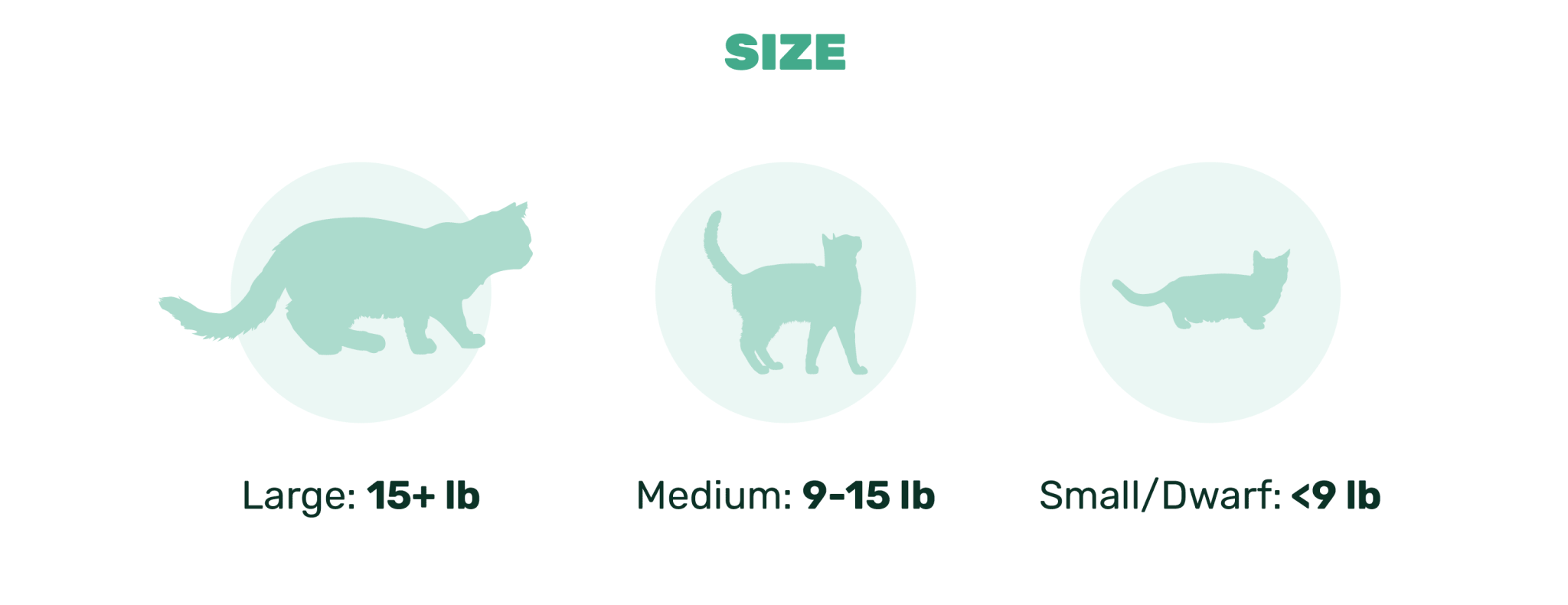
Cats come in a variety of sizes, ranging from tiny dwarf cats that might weigh just 4 pounds up to giants like the Maine Coon that can often weigh more than 25 pounds. The size and weight of your cat can tell you a lot about its breed, as each breed is classified by its size.
1. Large Cats

Cats that weigh over 15 pounds can generally be classified as large cats. They can weigh far more, but some large cats are as light as 12 pounds, making them easy to confuse with medium-sized cats. Some rare specimens can even weigh more than 30 pounds!
These cats aren’t just heavy; they’re also very long and tall. Large cats usually stand over 8 inches tall and can easily reach heights of 16 inches. They’re also quite long, ranging from about 30 inches at the shorter end of the scale to 47.2 inches at the record-holding size. If your cat meets these requirements, it’s a large cat.
Not many breeds reach this size, so identifying your cat shouldn’t be too difficult if it is this large.
2. Medium-Sized Cats

Most cat breeds fall into the medium-sized category. This is a large group of cats, so if your cat is medium-sized, its size won’t help much with breed identification, though it can still be a contributing factor when you determine some of your cat’s other traits.
Cats that fall into this classification most often weigh 9–12 pounds. If your cat is heavier, it’s probably a large cat, and if it’s lighter, it’s most likely a dwarf cat.
3. Small or Dwarf Cats
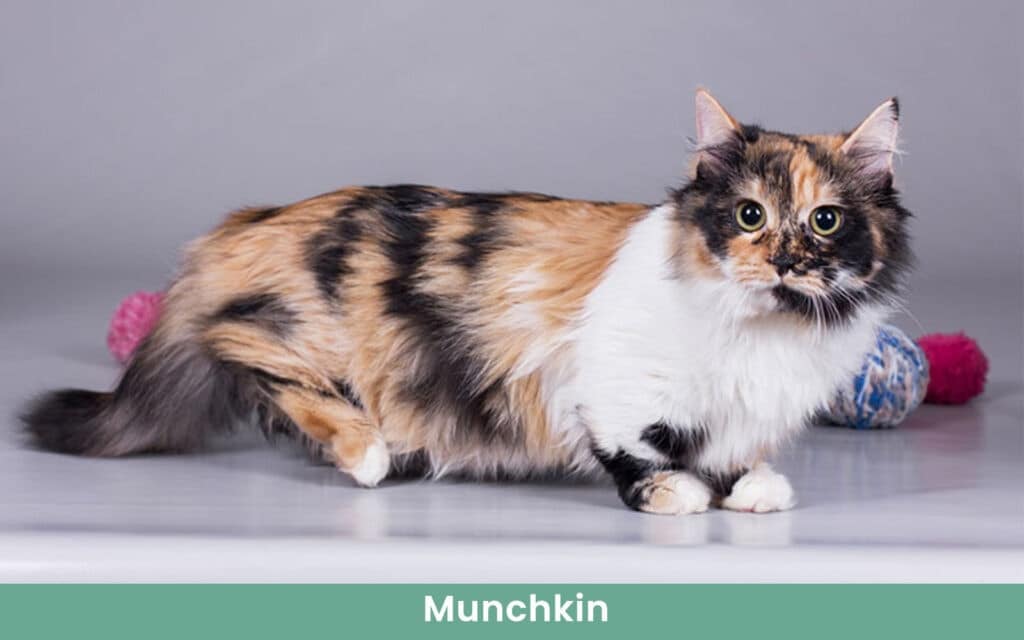
If your cat is lighter than 9 pounds and very small but fully grown, you likely have a small or even a dwarf cat. Luckily, small cats like this are relatively easy to identify, and there aren’t many dwarf cat breeds. Munchkins are the most well-known of these small cats, and many other dwarf breeds share Munchkin genetics.
Face Shape
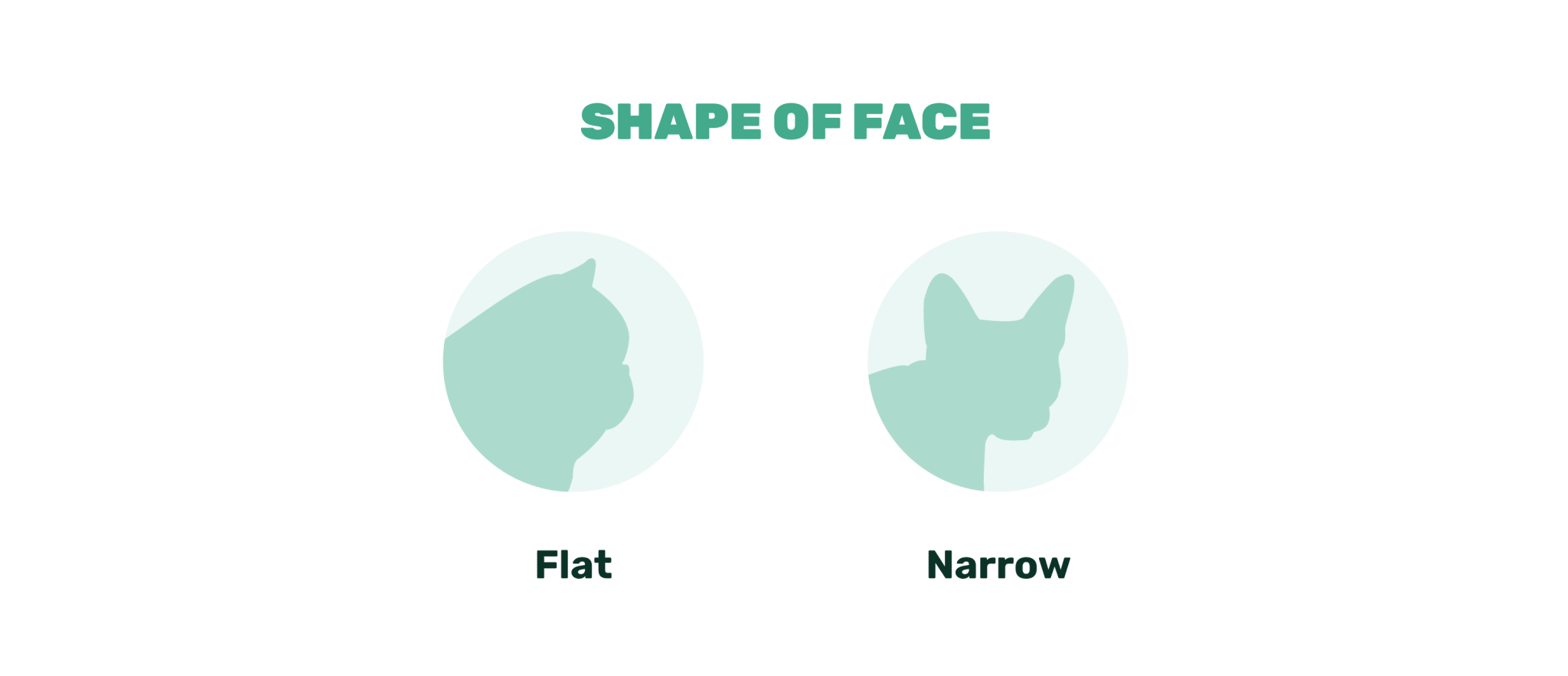
Not all cats will have faces shaped in a way that makes their breed easy to identify. However, cats that display certain face shapes can be narrowed down into very tight categories, making them easier to associate with a particular breed.
1. Round and Flat-Faced Cats
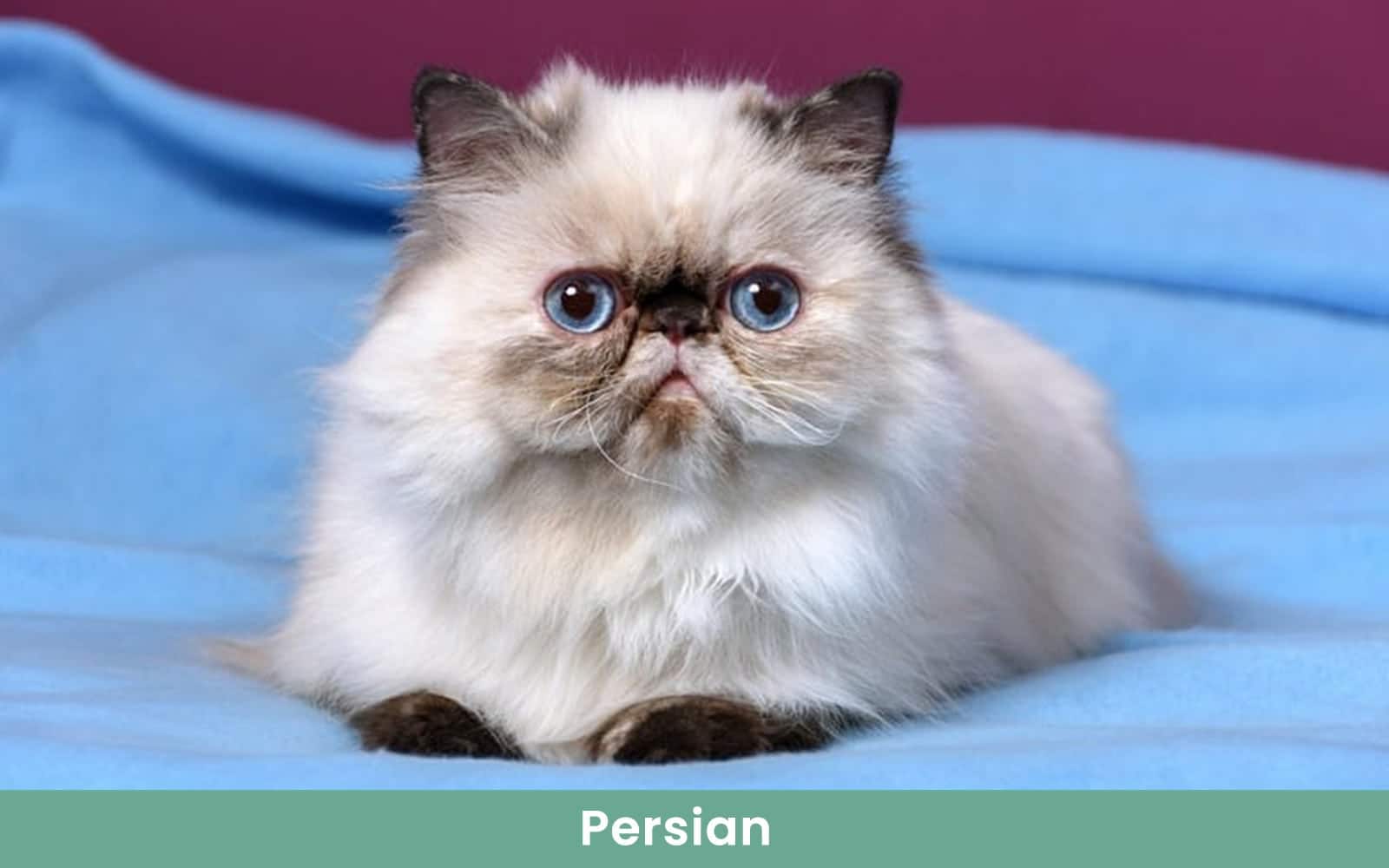
Certain cat breeds have flat faces that look almost as if they were smashed in from the front. They are known as brachycephalic breeds, and they have shorter skulls than is typical of other breeds. In some felines, such as Persians, this trait is optional but desirable, and it sets the breed apart from others.
Unfortunately, there are some downsides to brachycephalic breeds. They’re susceptible to a myriad of health problems due to their unique anatomical structure.
- Birthing complications
- Vision problems
- Dental health problems
- Respiratory infections
- Breathing difficulty
Thankfully, there aren’t many cats with flat faces, so if your cat is brachycephalic, it should be easy to identify its breed.
2. Narrow-Faced Cats
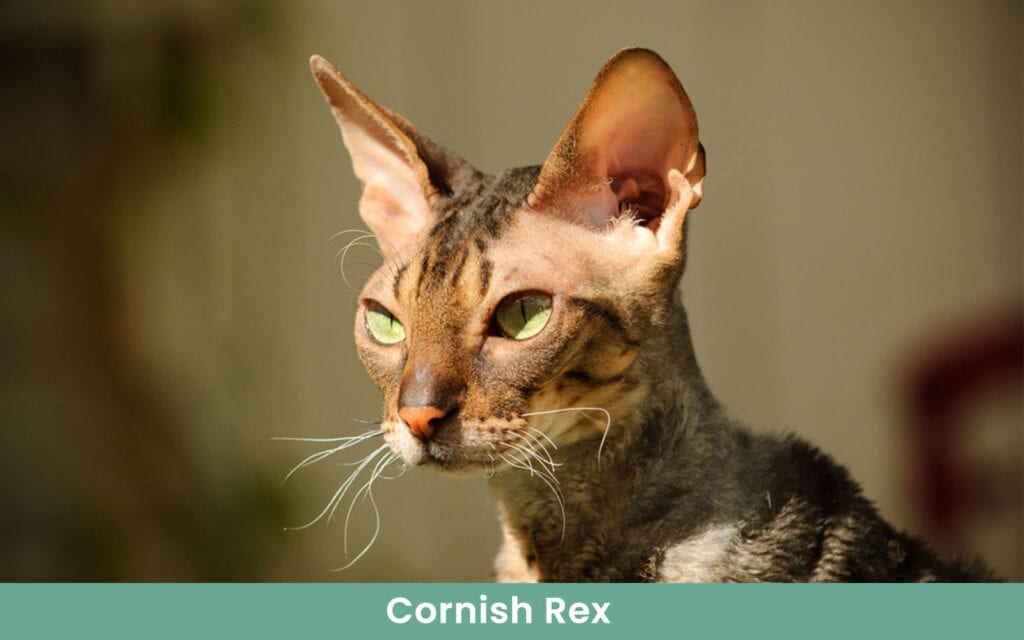
Almost the opposite of flat-faced cats are narrow-faced felines that have triangular faces. There are even fewer narrow-faced cats than flat-faced ones.
Ears

The shape of your cat’s ears can be a dead giveaway to its genetic makeup if it displays certain traits. For instance, only a few breeds have folded or curled ears, making them easy to identify. Genetic mutations often cause these ear shapes, but they’ve become the defining characteristic of many breeds that display them.
1. Curled Ears
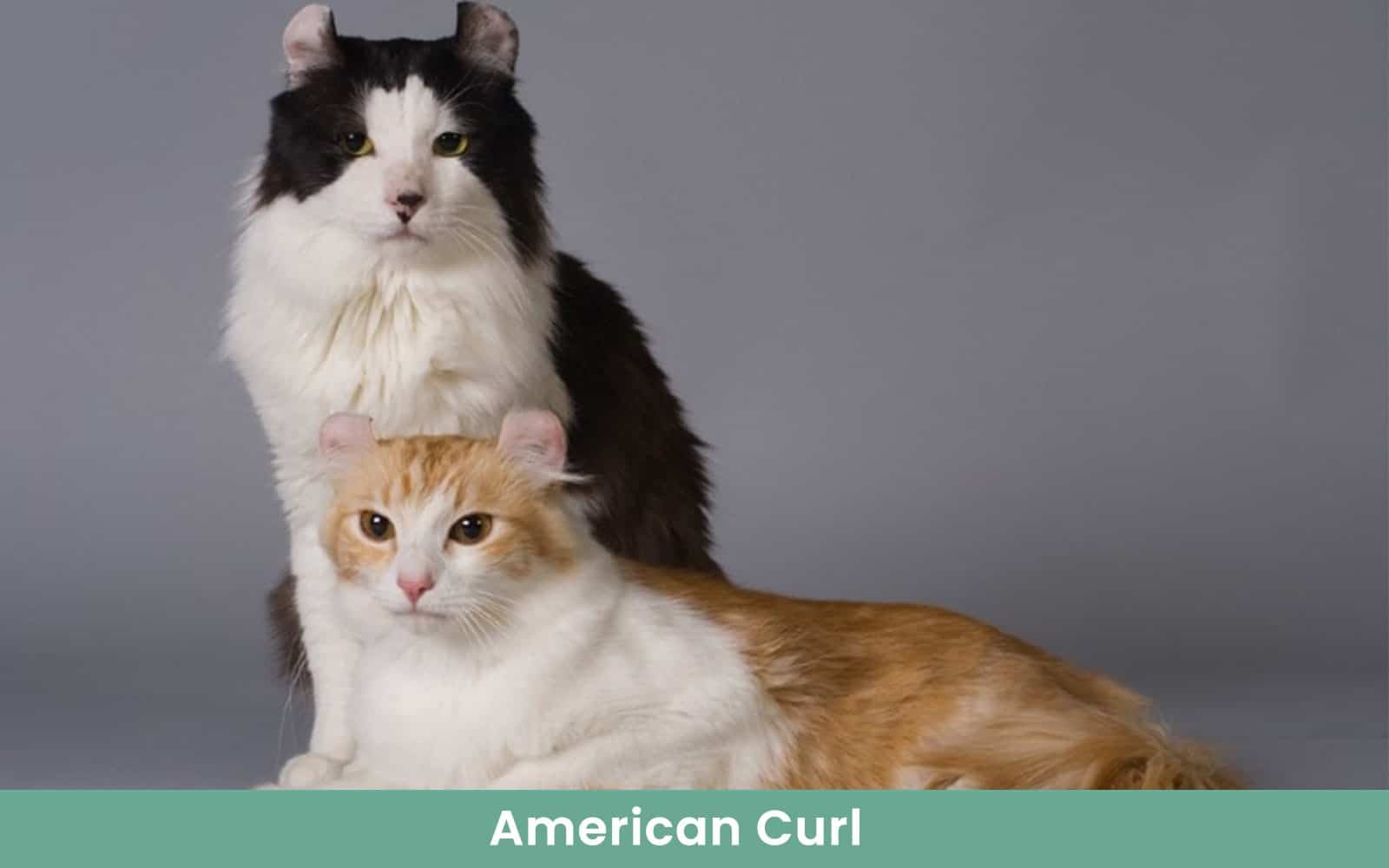
Curled ears are shaped like an arch. They curl backward, sticking up high, almost like small horns.
2. Folded Ears
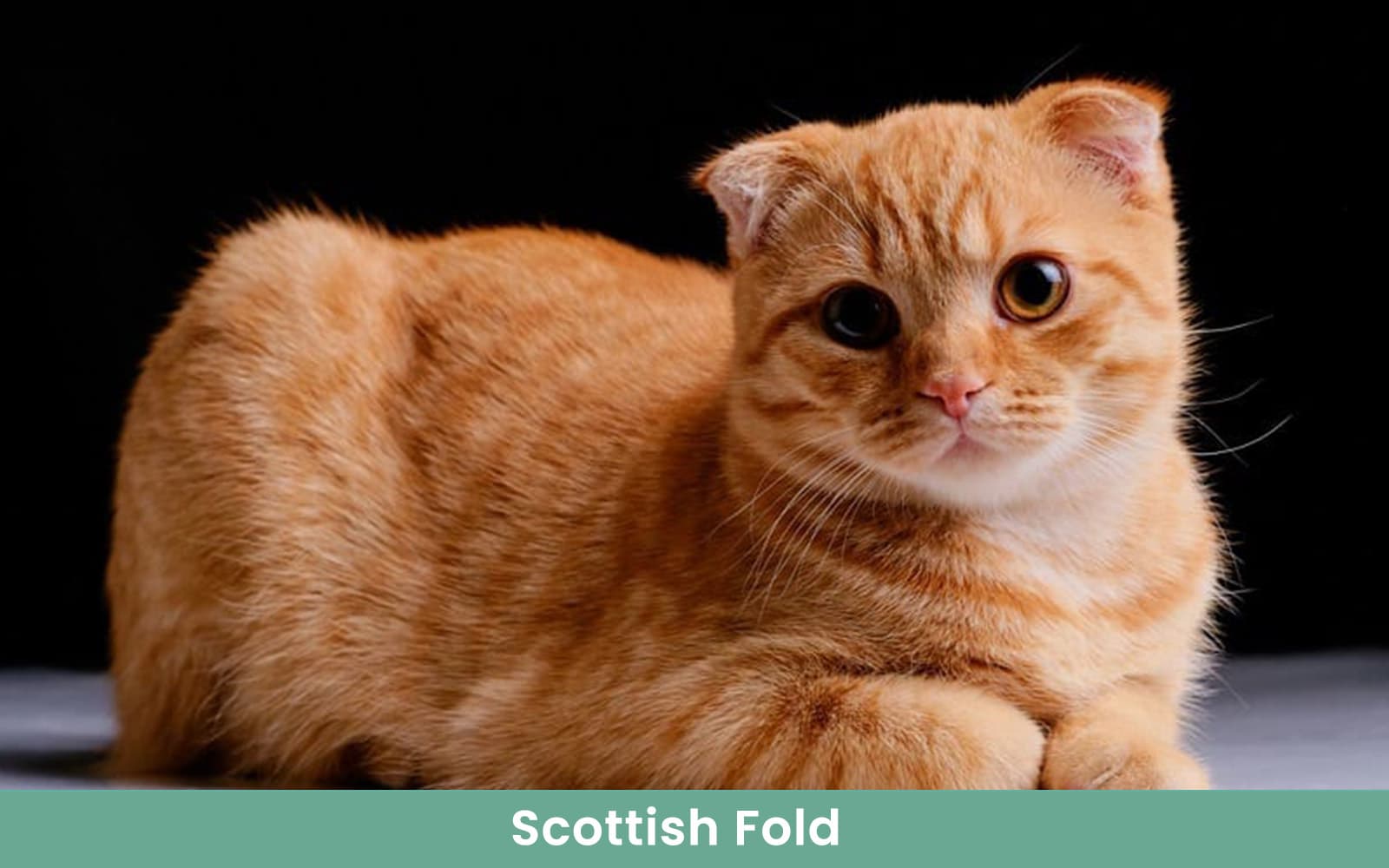
Though they’re different, cats with folded ears are often lumped together with curled-ear cats. One significant difference is that curled-ear cats are generally healthy. However, cats with folded ears have them due to a genetic mutation that can cause some health issues, including deformities, arthritis, deafness, infections, and more. The gene that causes their ears to fold affects the cartilage throughout their bodies.
- Scottish Folds are the only breed to display this trait, so if your cat has folded ears, it has Scottish Fold in its genetic makeup.
3. Tufted Ears, Lynx Tips, or Ear Furnishings
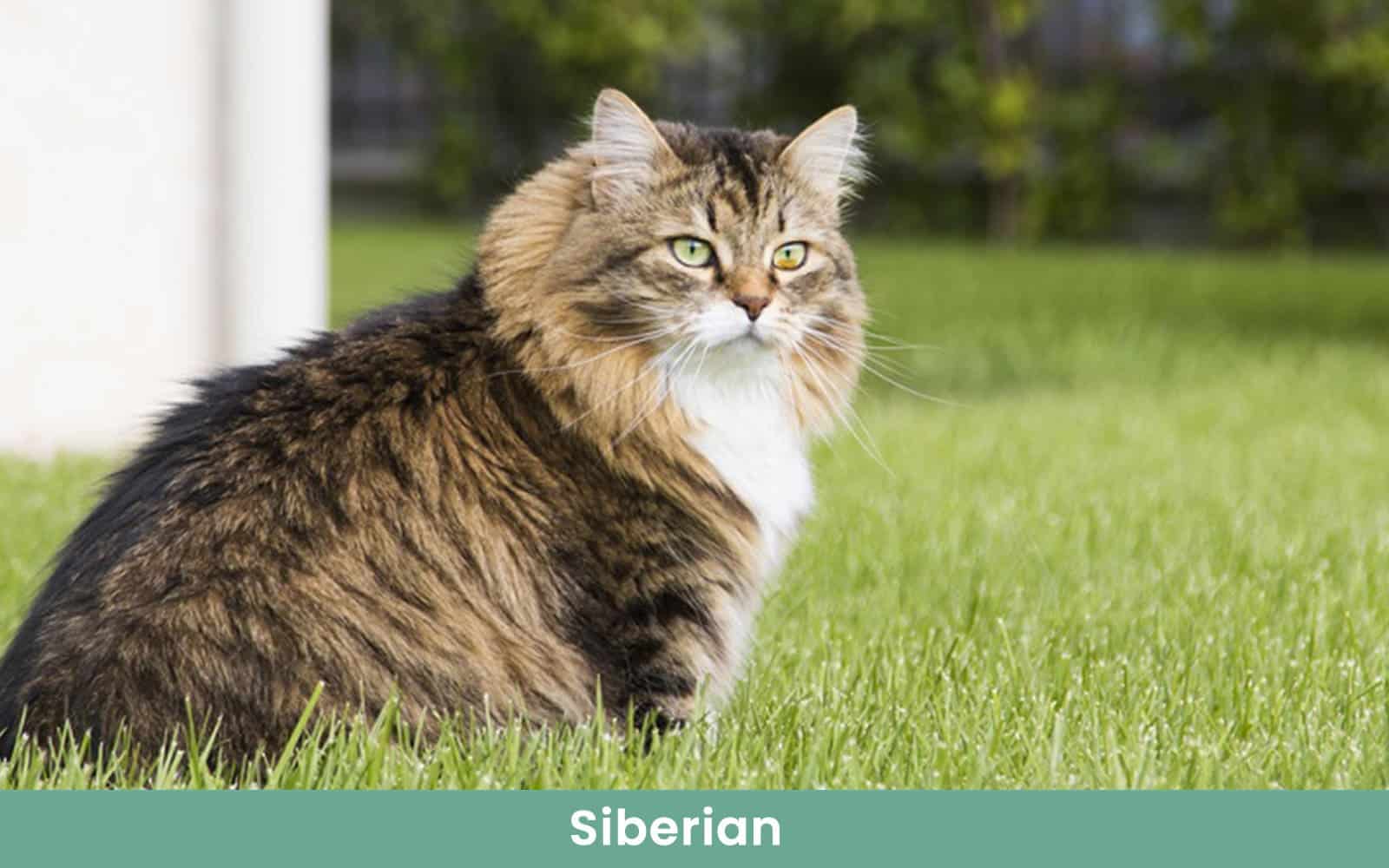
Ear tufts, also known as lynx tips, are the tufts of fur growing from the tips of a cat’s ears. They keep debris out of the ear while directing sound in. Ear furnishings are similar; they’re the hairs that grow inside a cat’s ears. Quite a few cat breeds display these ear adornments, and if your cat has them, it can help narrow down its breed to one of the following.
Eyes
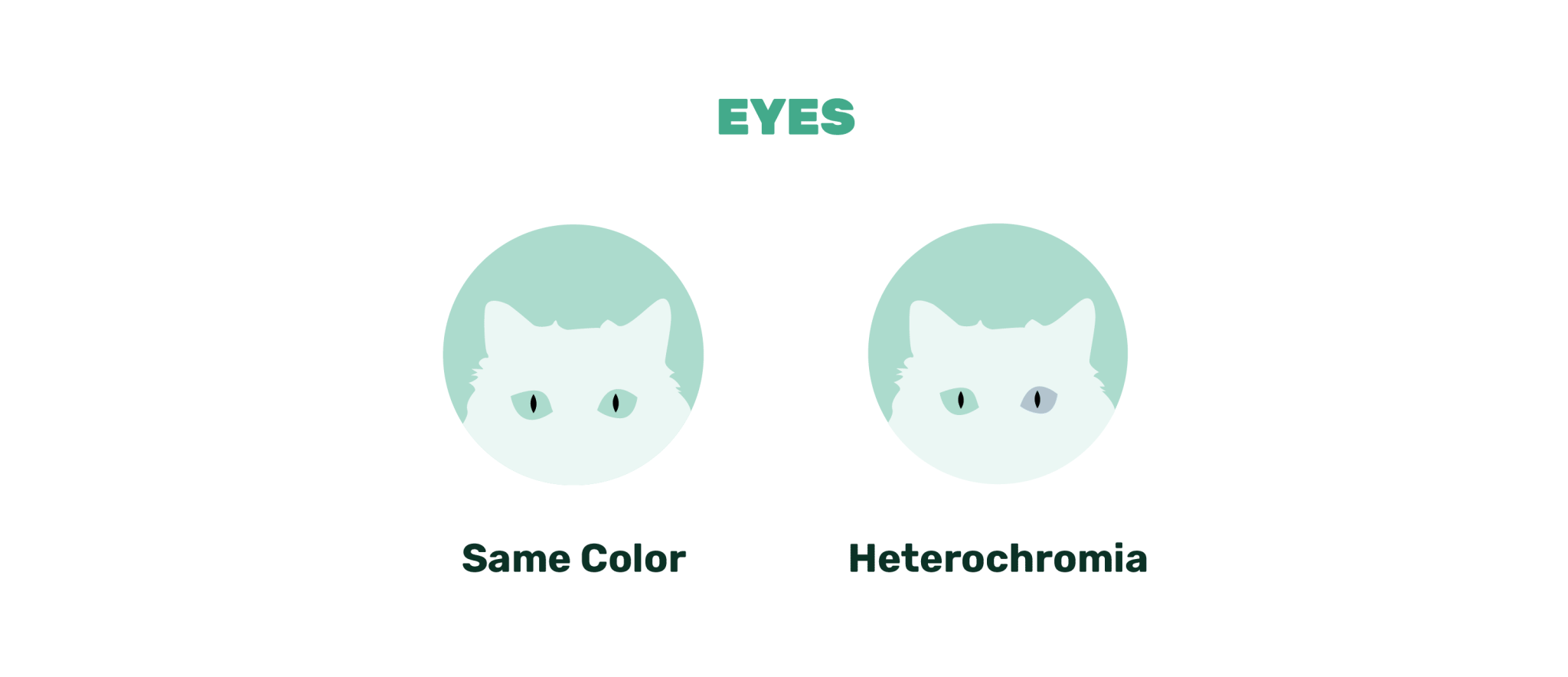
Cats can display a wide range of eye colors.
- Amber
- Hazel
- Gold
- Green
- Blue
If both of your cat’s eyes are the same color, it might not tell you much about your cat’s breed. However, some cats have eyes that are different colors. Known as heterochromia, cats with this odd-eyed condition are a genetic anomaly. It is linked to the white dominant and the white spotting genes, and certain breeds can display it.
Coat
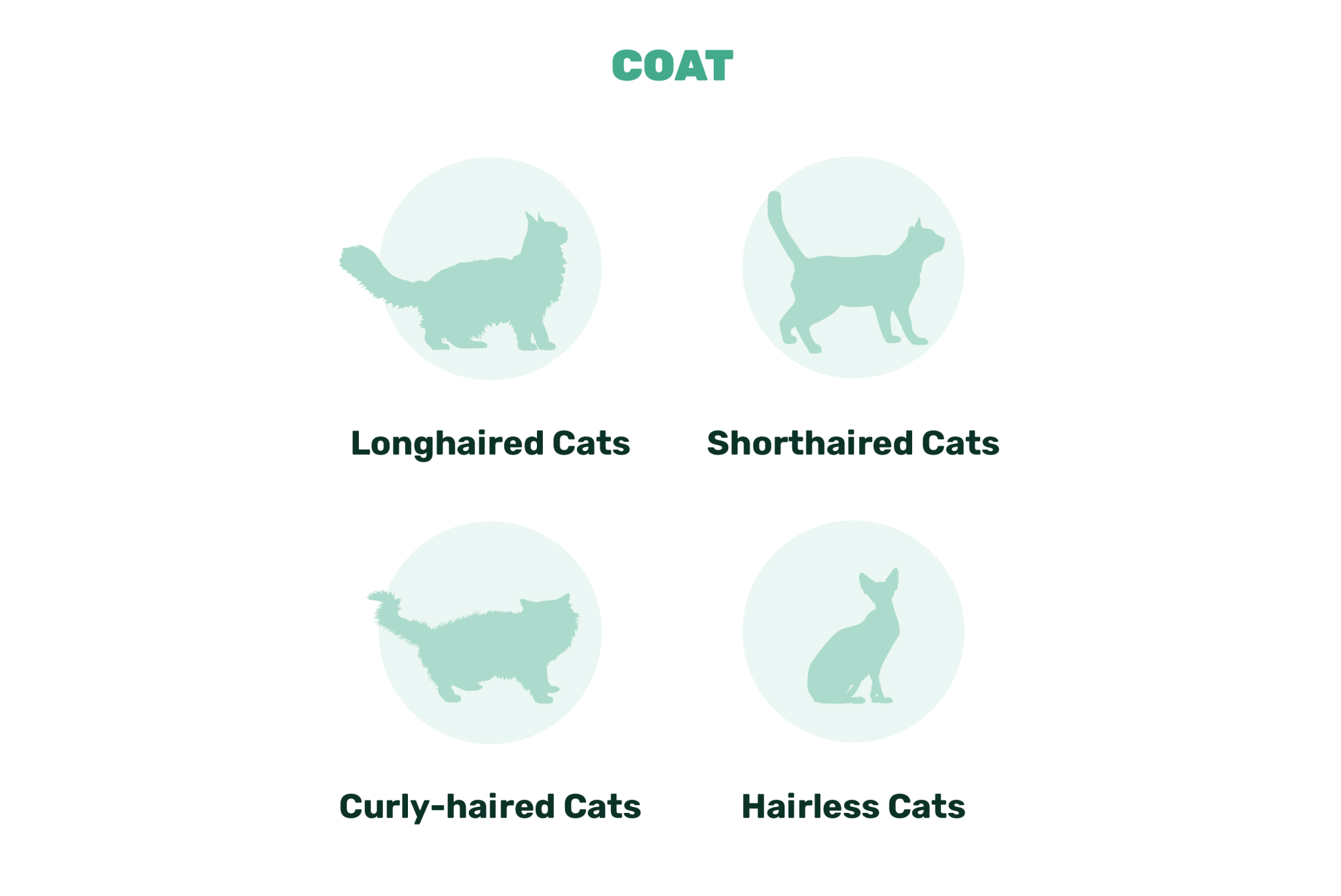
Your cat’s coat can offer another clue as to its breed. Cats can have many coat types, including long hair, short hair, no hair, and curly hair. Many breeds are known for having a specific coat type, with some even being named after their coats. In some cases, determining the type of coat your cat has can make it much easier to identify its breed.
1. Longhaired Cats
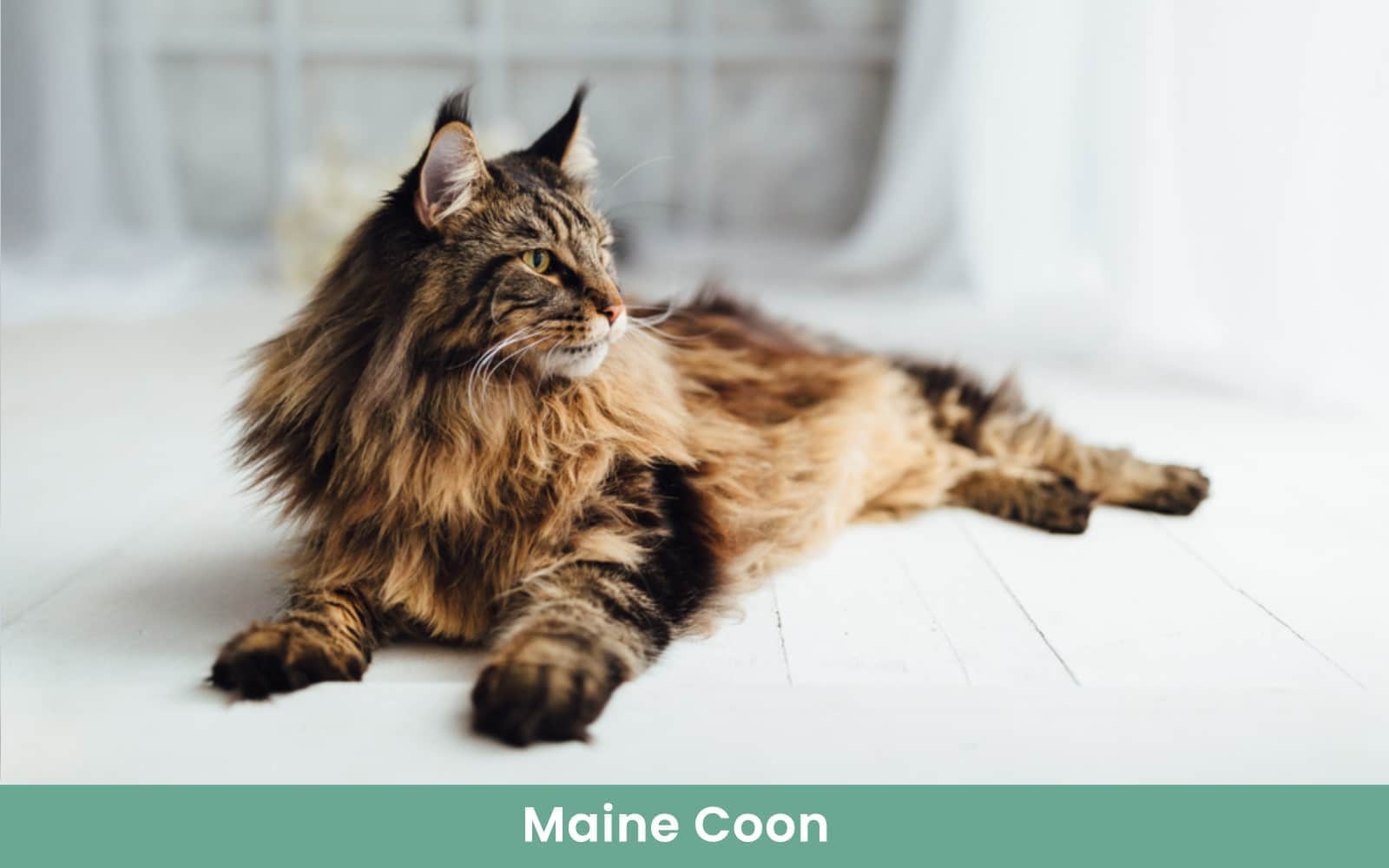
Longhaired cats have long, fluffy coats that can make them appear much larger than they are. These breeds have thick fur and shed quite a bit.
- American Longhair
- Balinese
- Birman
- British Longhair
- Domestic Longhair
- Himalayan
- Long-Haired Siamese
- Maine Coon
- Norwegian Forest Cat
- Persian
- Turkish Angora
2. Shorthaired Cats
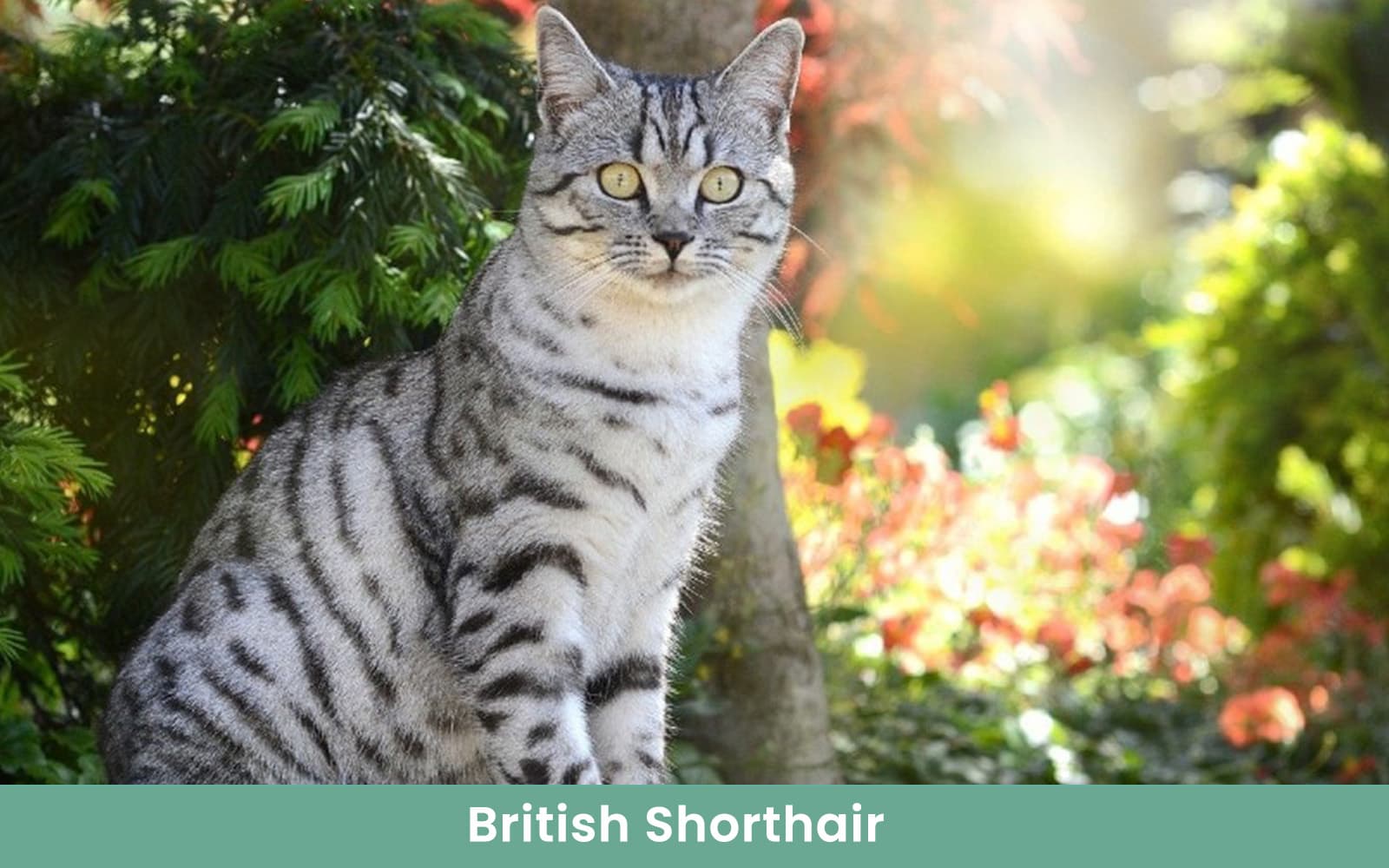
Unlike longhaired cats, shorthaired cats have short fur that stays close to their bodies. They need far less grooming than longhaired cats, and their coats are easier to maintain.
3. Curly-Haired Cats
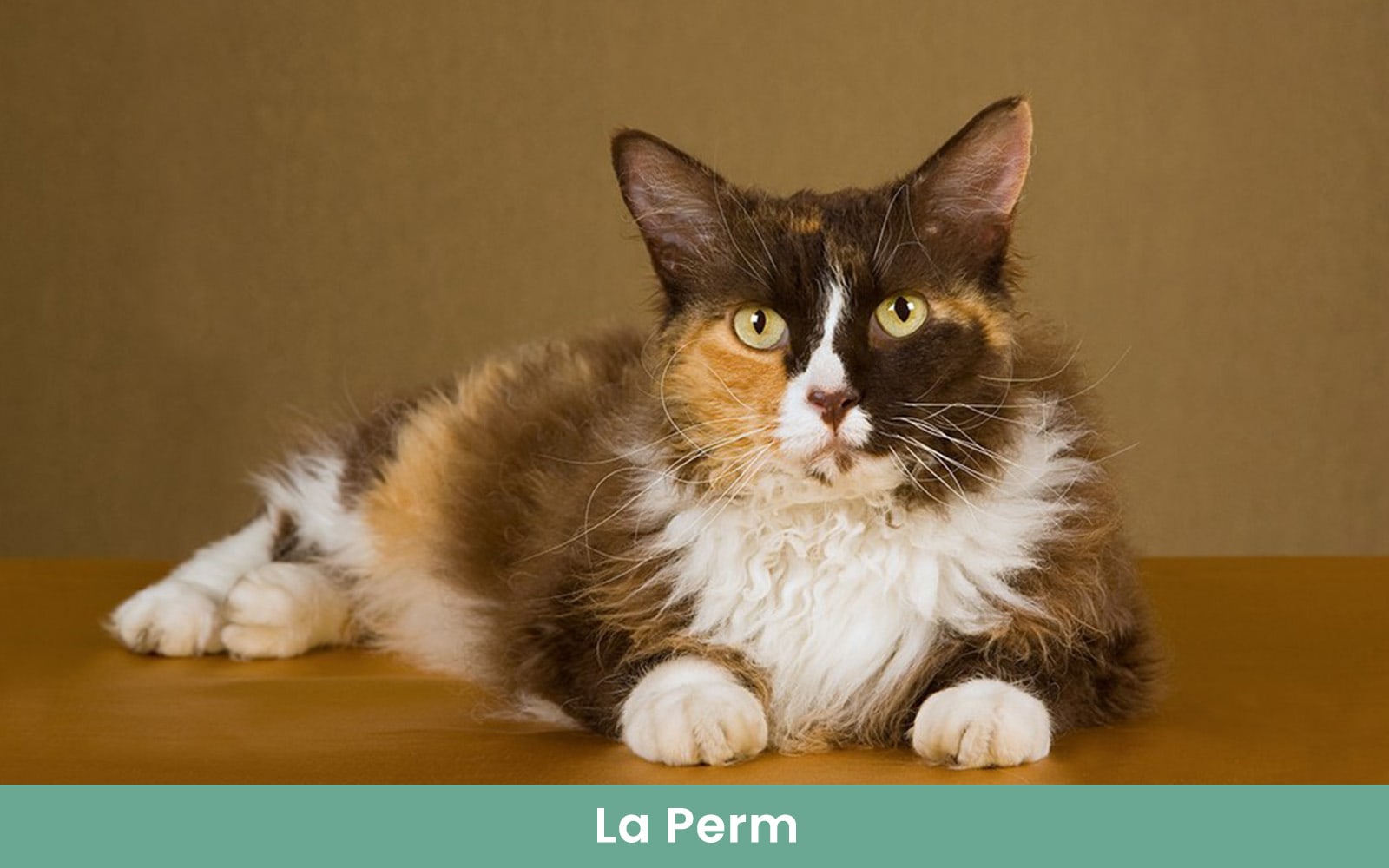
As you might expect, curly-haired cats have curly coats. They’re a bit harder to maintain than straight coats since they tangle more. Cats can have curly hair that’s also long or short, so your curly-haired cat could be classified as a shorthaired or longhaired cat as well.
4. Hairless Cats
Hairless cats have a very unique look, and they’re easy to identify as hairless since they lack the fur coats that other cats wear. A famous example is Mr. Bigglesworth, Dr. Evil’s hairless pet cat from the Austin Powers movies. These cats are popular with people who suffer from cat allergies because of their bald bodies. There aren’t too many hairless breeds, so if your cat is hairless, it is likely one of the following.
Colors, Patterns, and Markings
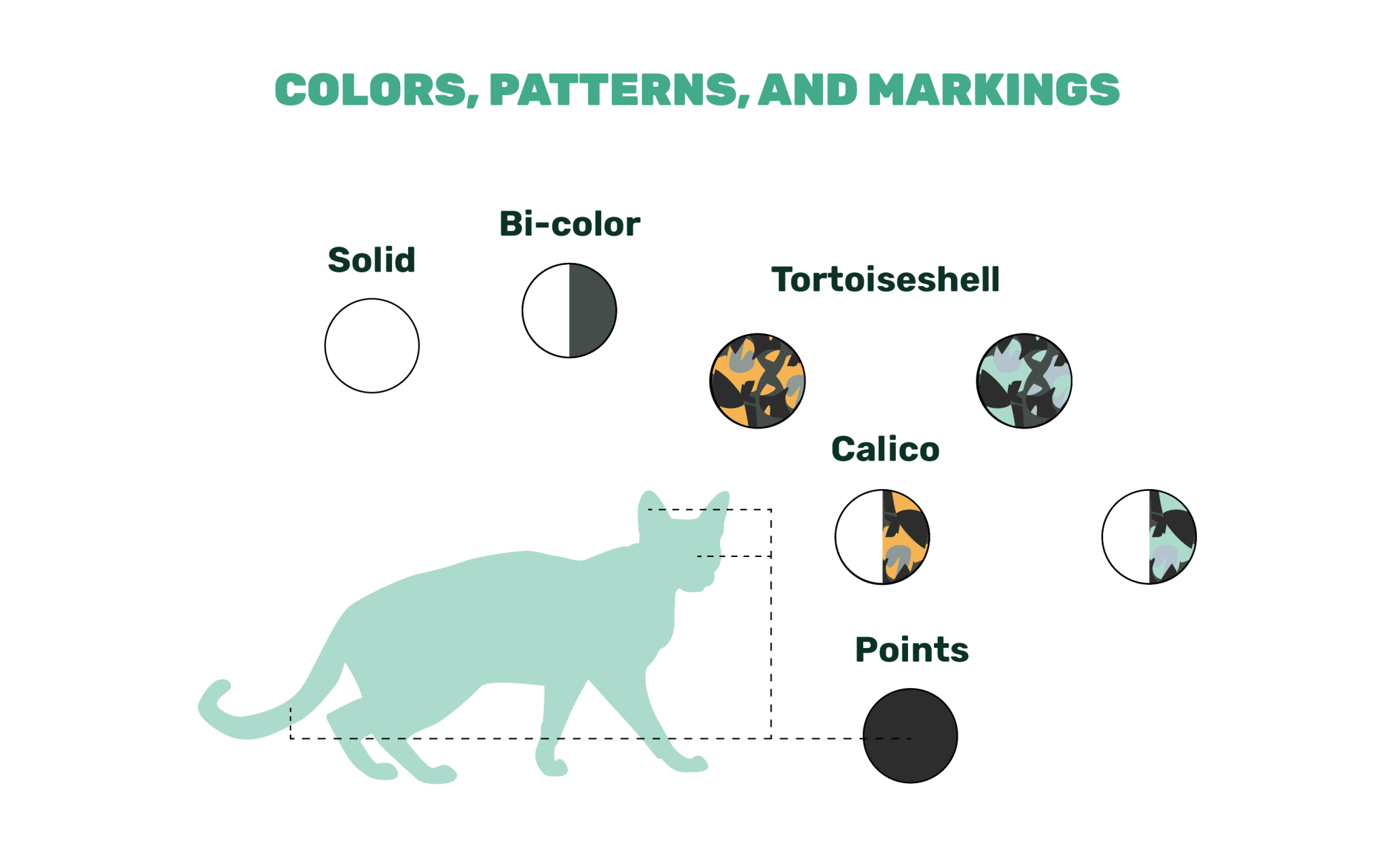
While your cat’s color isn’t going to offer an immediate answer as to its breed, certain colors, patterns, and markings are specific to some breeds, adding one more clue to the list of evidence you can use to determine your cat’s breed.
1. Solid Color
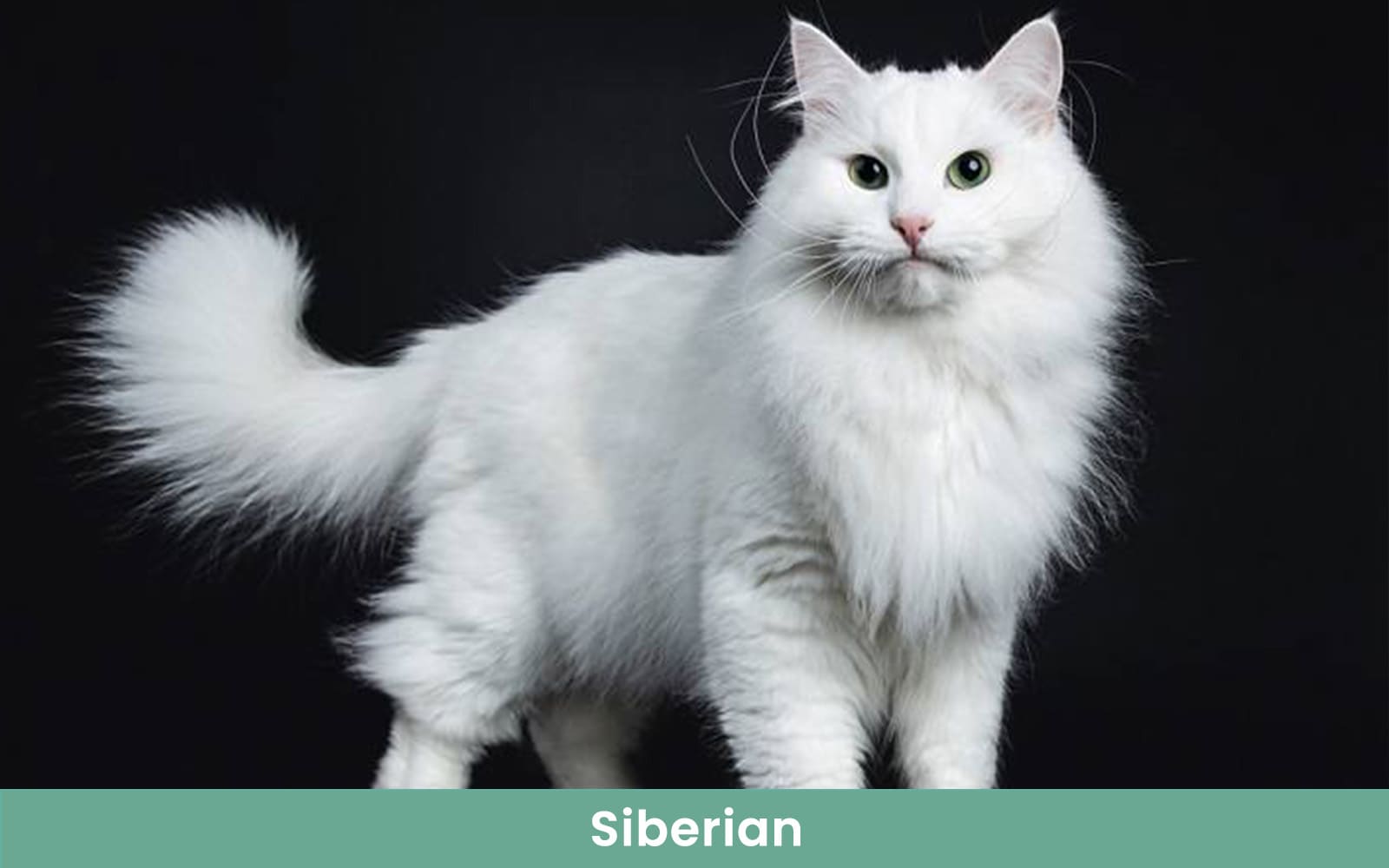
Cats that display just one color are solid-colored cats. They can be in many colors, including black, white, brown, red, and more.
2. Bi-Color
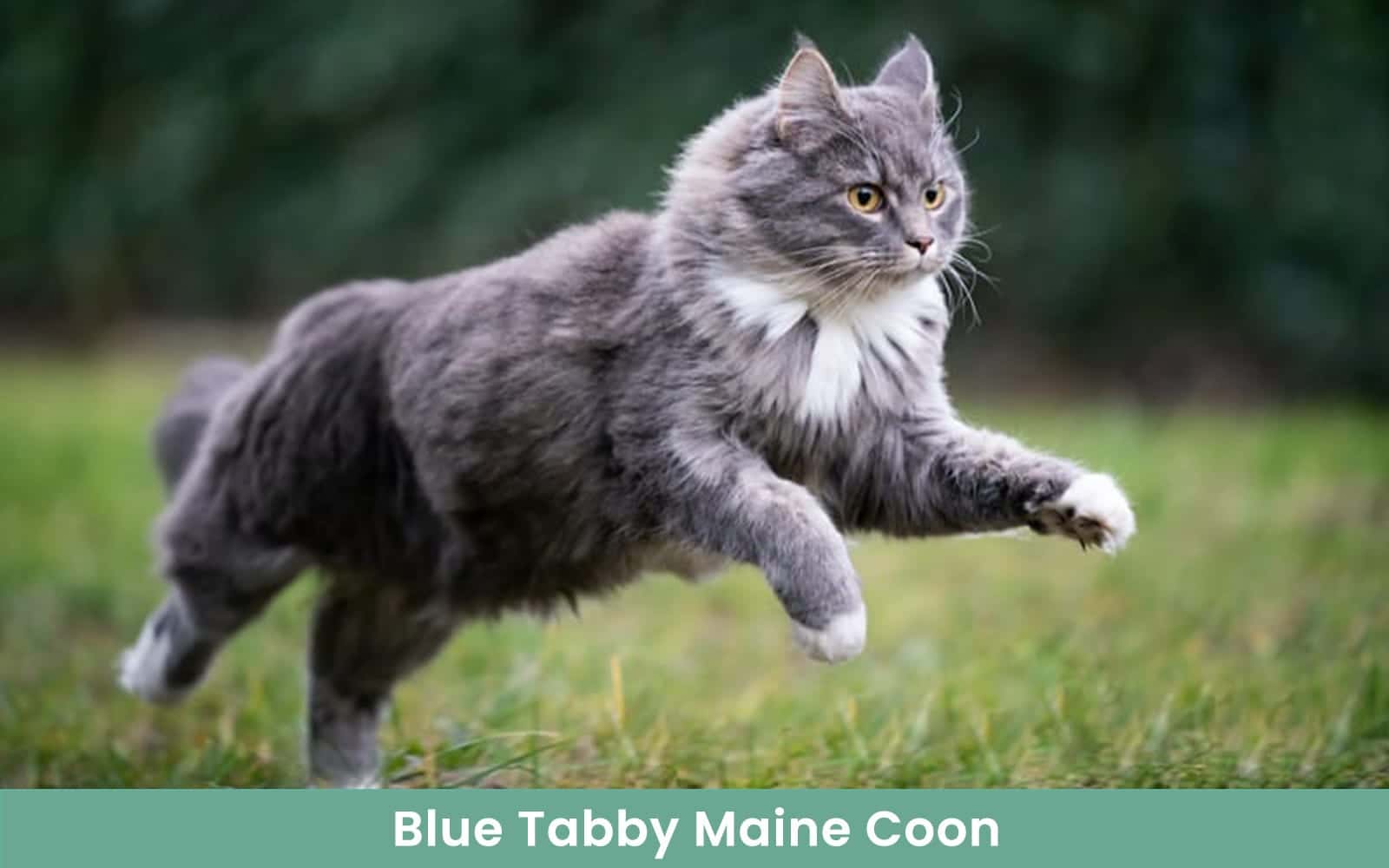
Bi-colored cats display two colors on their bodies. Also known as piebald, these cats have one main base color; the second color is white, which can take up most of the cat’s coat or only a small patch.
3. Tortoiseshell
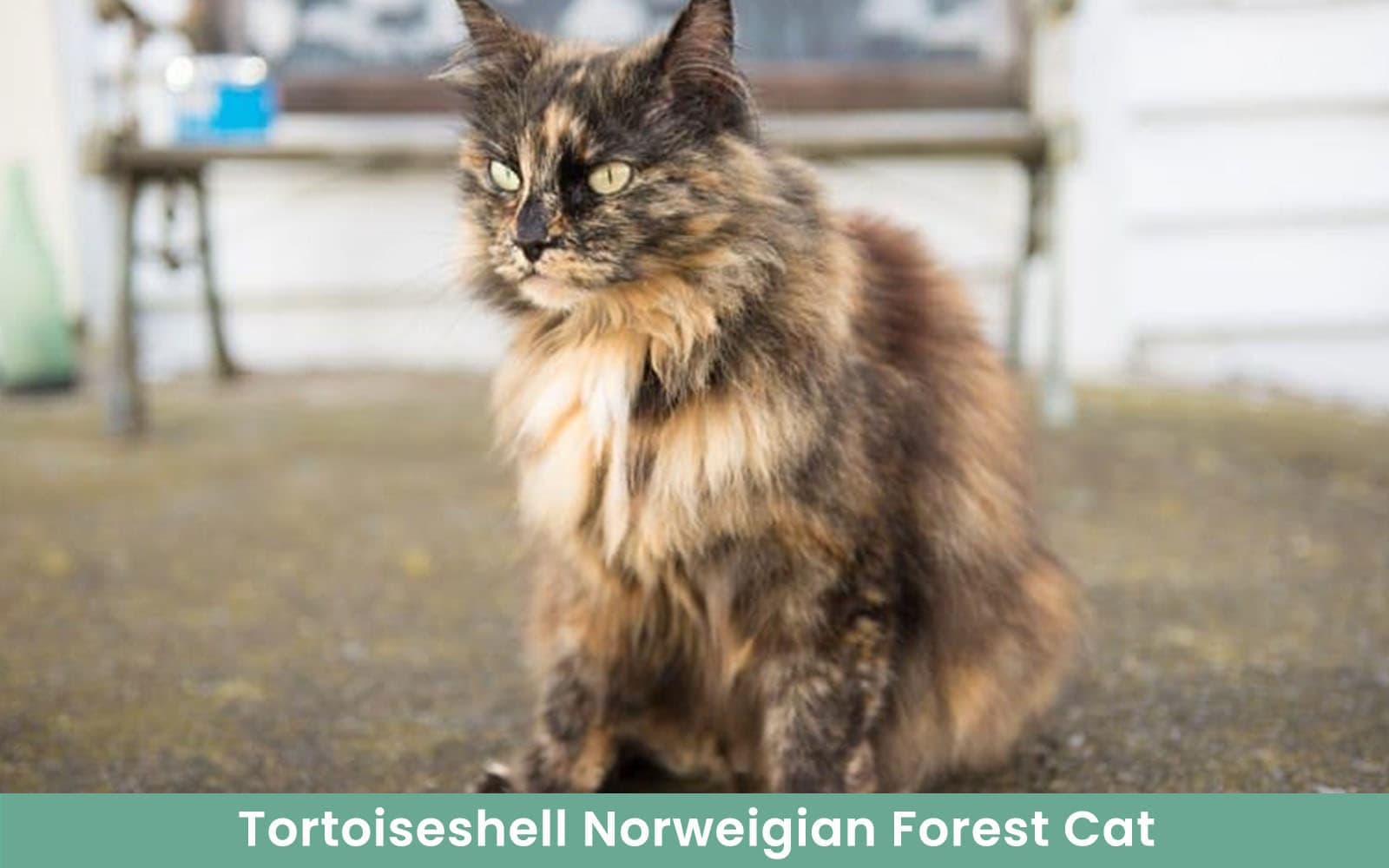
Tortoiseshell cats are similar to bi-colored cats, but they have no white in their coats. Instead, they have a base color and any secondary color that can appear as patches mixed into the base color. The most common tortoiseshell colors are orange and black, though many other colors display in tortoiseshell patterns like blue, chocolate, red, yellow, and cream. Purebred cats and mixed breeds alike can exhibit tortoiseshell patterns.
4. Calico
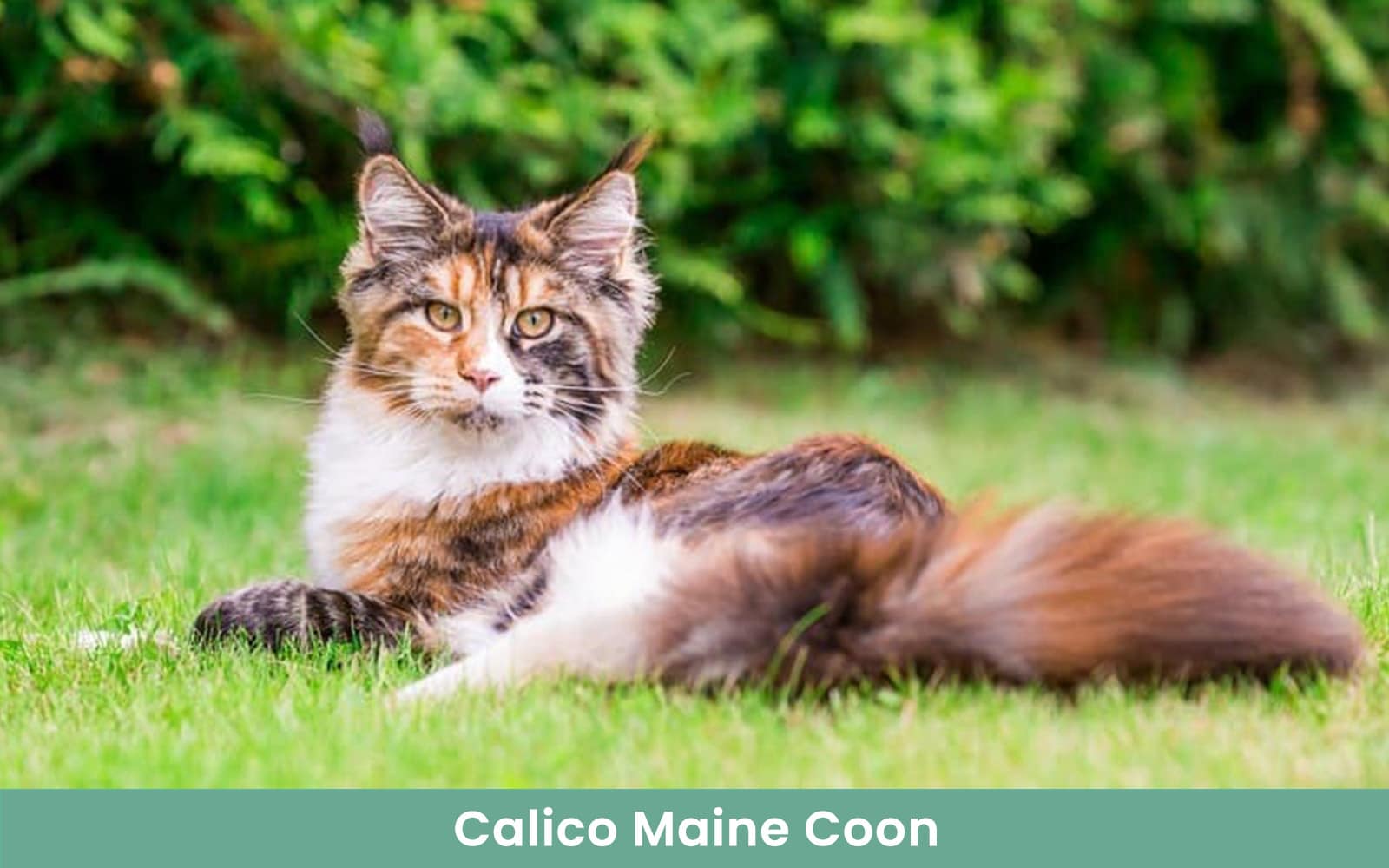
Calico cats have tri-colored coats. One of the colors is white, but the other two colors can be anything. Almost all calico cats are females. Only one in 3,000 calico cats are born male, most of whom are sterile.
5. Points

You may have heard of a cat as having colored points. This means that its face, feet, ears, and tail display dark coloration that contrasts with the color displayed on the rest of its coat. The points can come in just about any color, and so can the base coat color. Not every breed can display colored points.
Tail

There are not many variations when it comes to cat tails but this is one telltale trait that can certainly narrow down your search!
1. Long Tails
Most cats have pretty standard tails that won’t offer you too much insight into the cat’s genetics.
2. Short Tails
Short tail can be a big clue to help you determine your cat’s breed. Only a few breeds display short tails, and many of them are named after this feature since it’s so uncommon. These tails often look cropped, but they’re natural.
Behavior
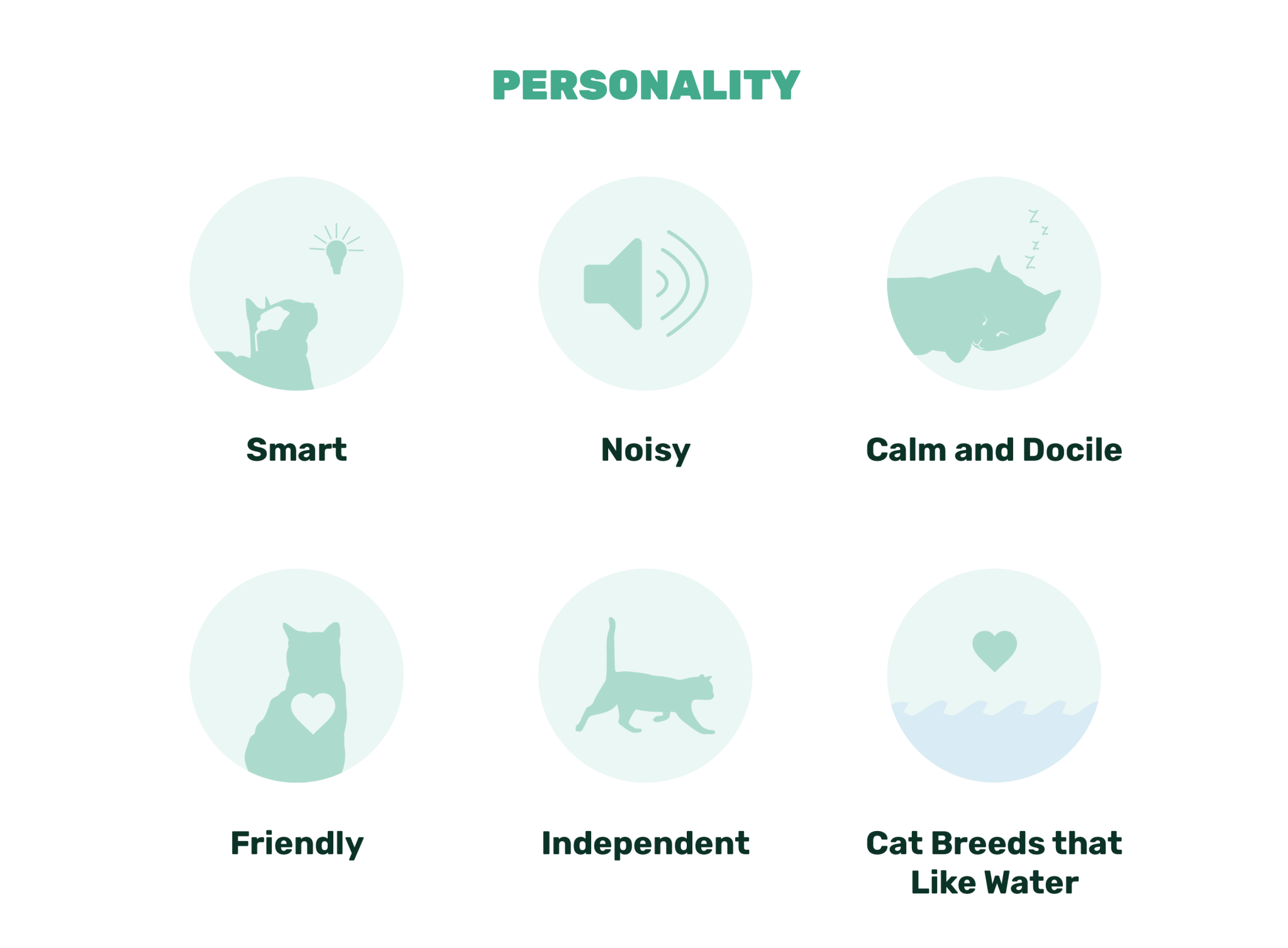
While it’s true that each cat is an individual and will have its unique personality, some behavioral traits and temperaments are typical to certain breeds. If your cat displays certain personality traits, it could help to point to a particular breed in their blood.
1. Smart Cat Breeds
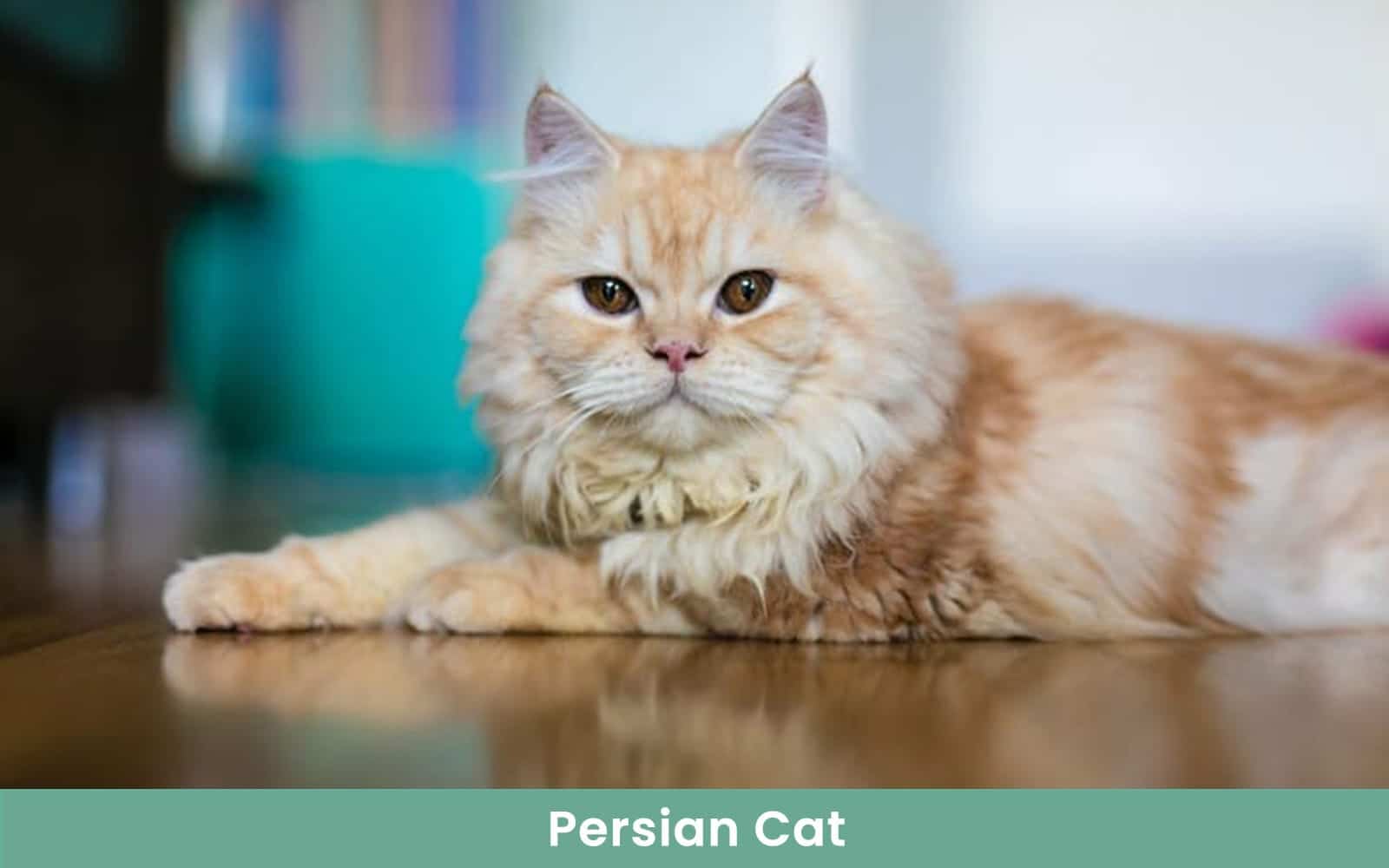
Most people consider cats to be rather intelligent creatures. Some breeds are notably smarter than others.
2. Noisy Cat Breeds
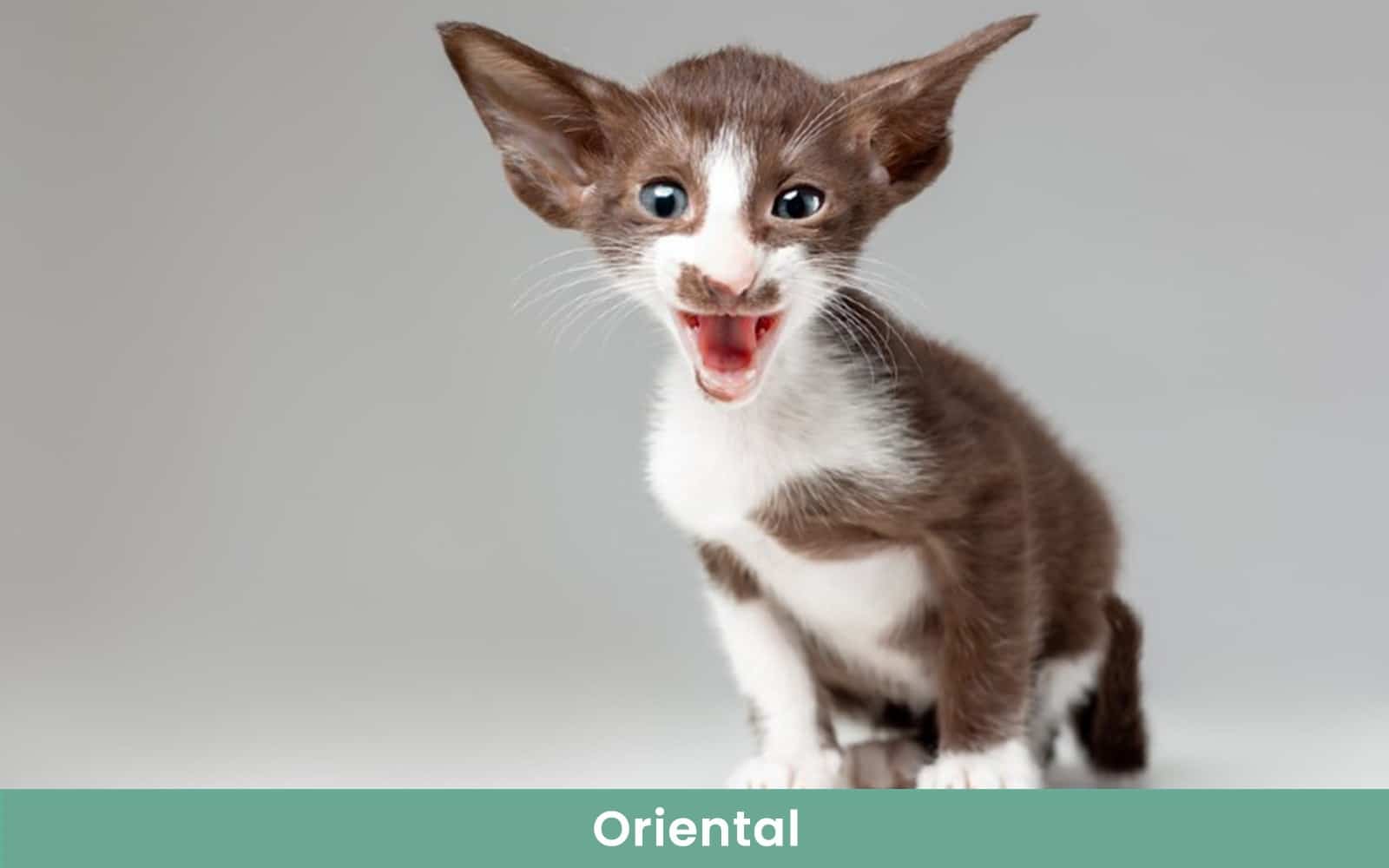
Many cats are quiet, reserved creatures. On the other hand, some cats are extremely vocal and love to purr, sing, or chat with their owners. Vocalness is a trait that is only common to a few breeds.
3. Calm and Docile Cat Breeds
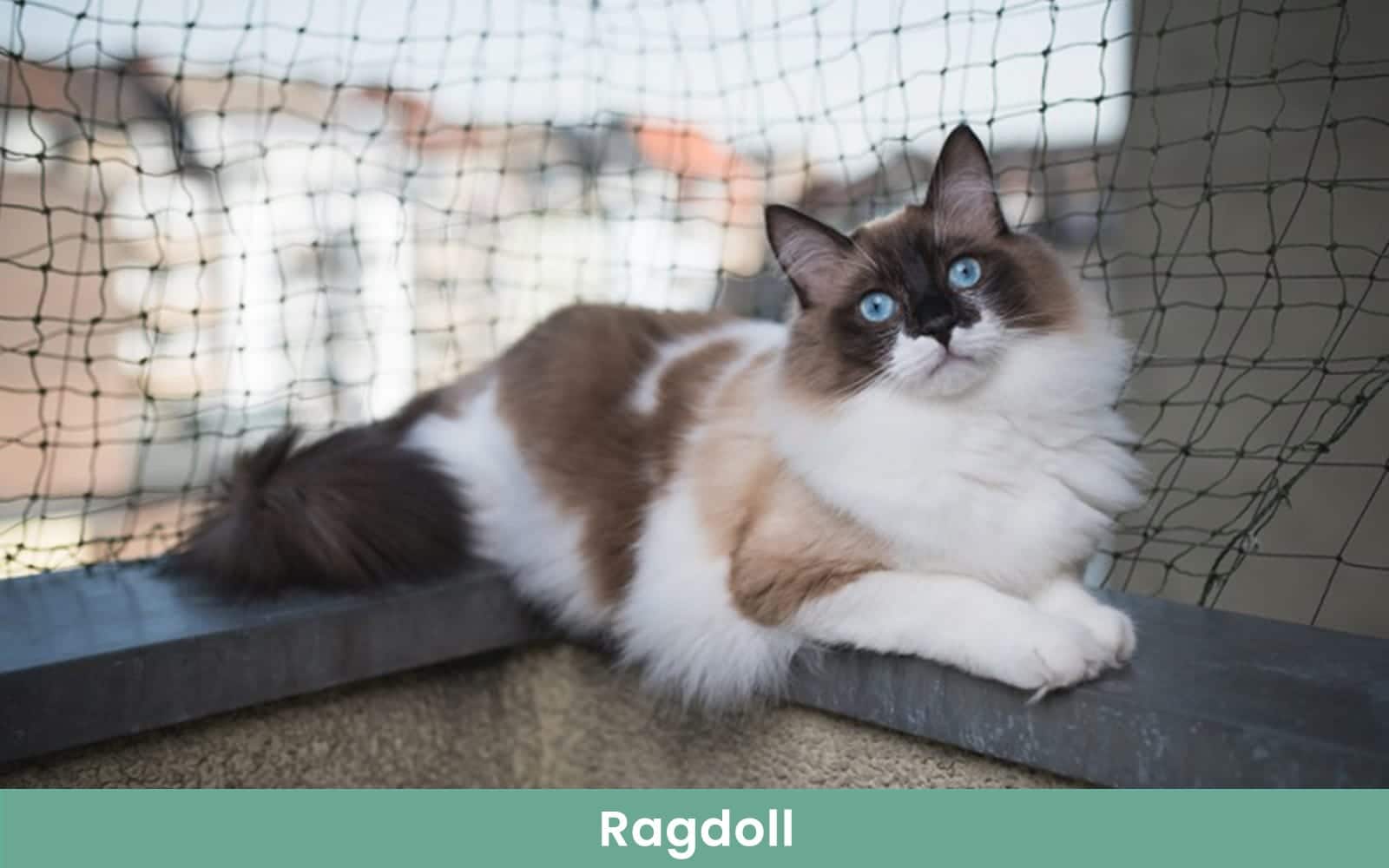
As natural predators, many cats are on the go all the time. These cats have plenty of energy and love to play, hunt, chase, climb, and generally expend their energy in various ways. It’s unique when cats are quiet, reserved, and docile, and the cats are easier to identify.
4. Friendly Cat Breeds
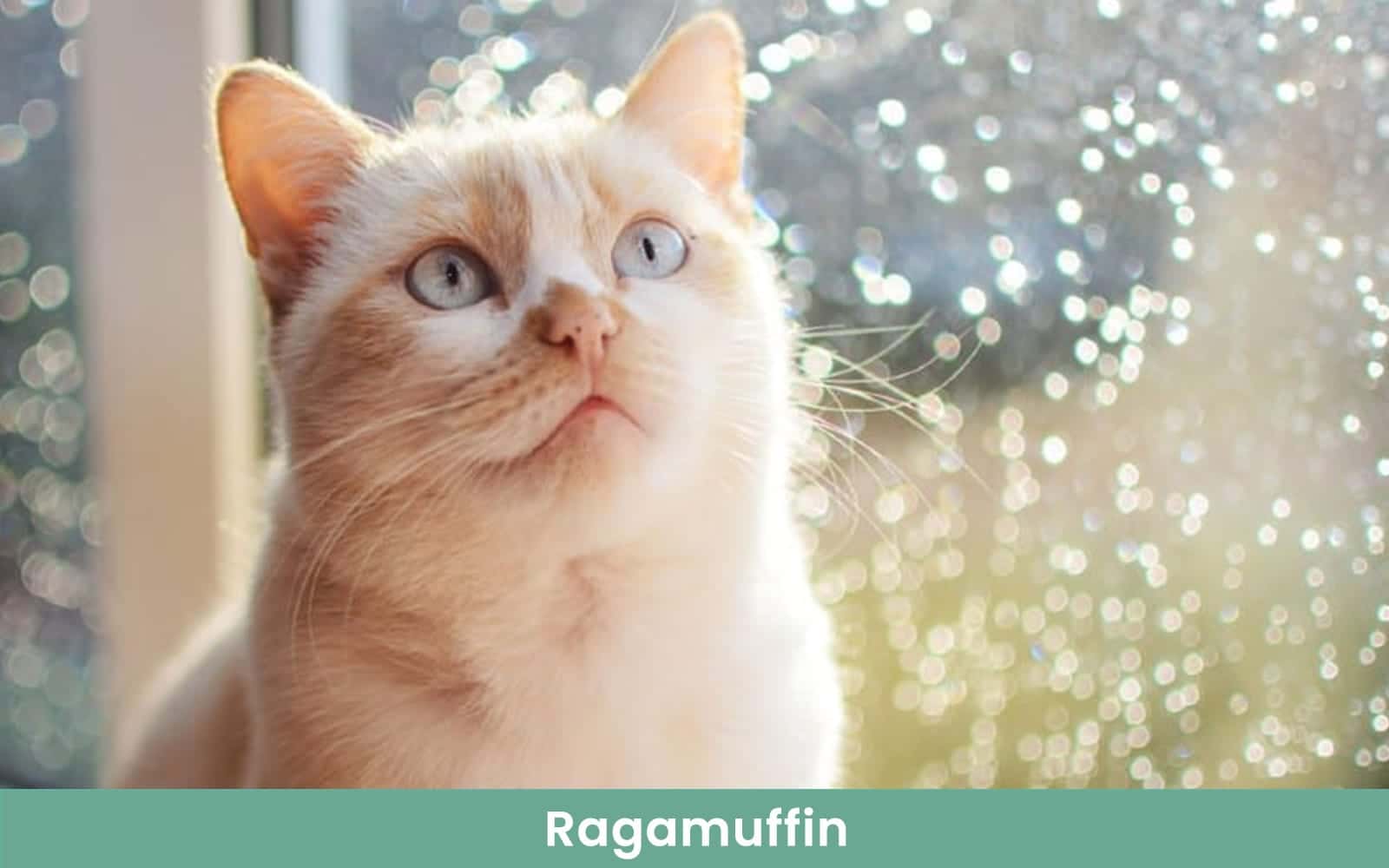
Cats have a reputation for being a bit standoffish and stuck up. However, some are friendly and inviting creatures that will come up to anyone to get a nice rub down.
5. Independent Cat Breeds
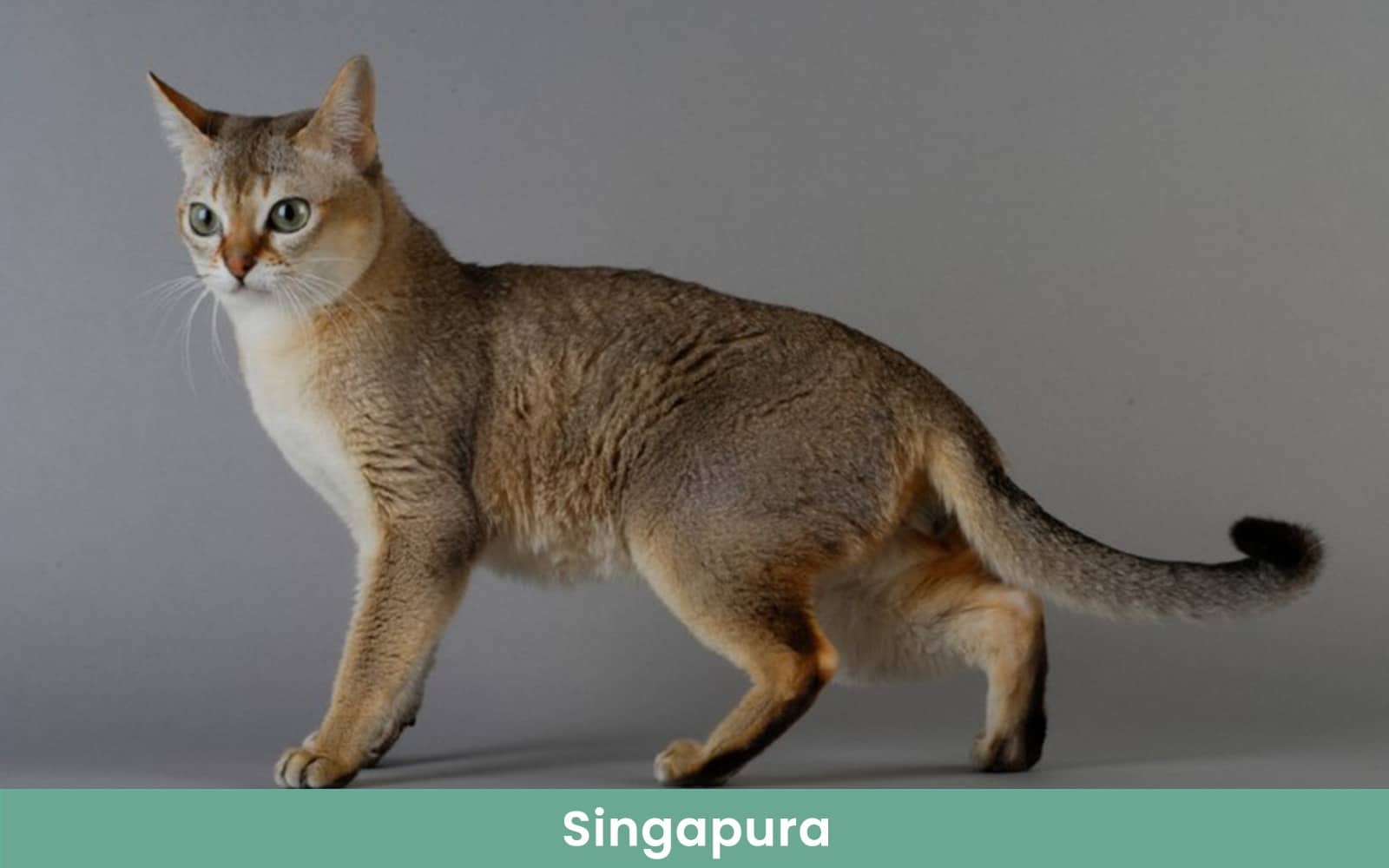
Some cats only want your attention when they decide they want it, and when that time comes, they’re pretty adamant—it’s not a request. These bossy, independent felines believe themselves to be lords of the manor, in charge of all they see.
6. Cat Breeds That Like Water
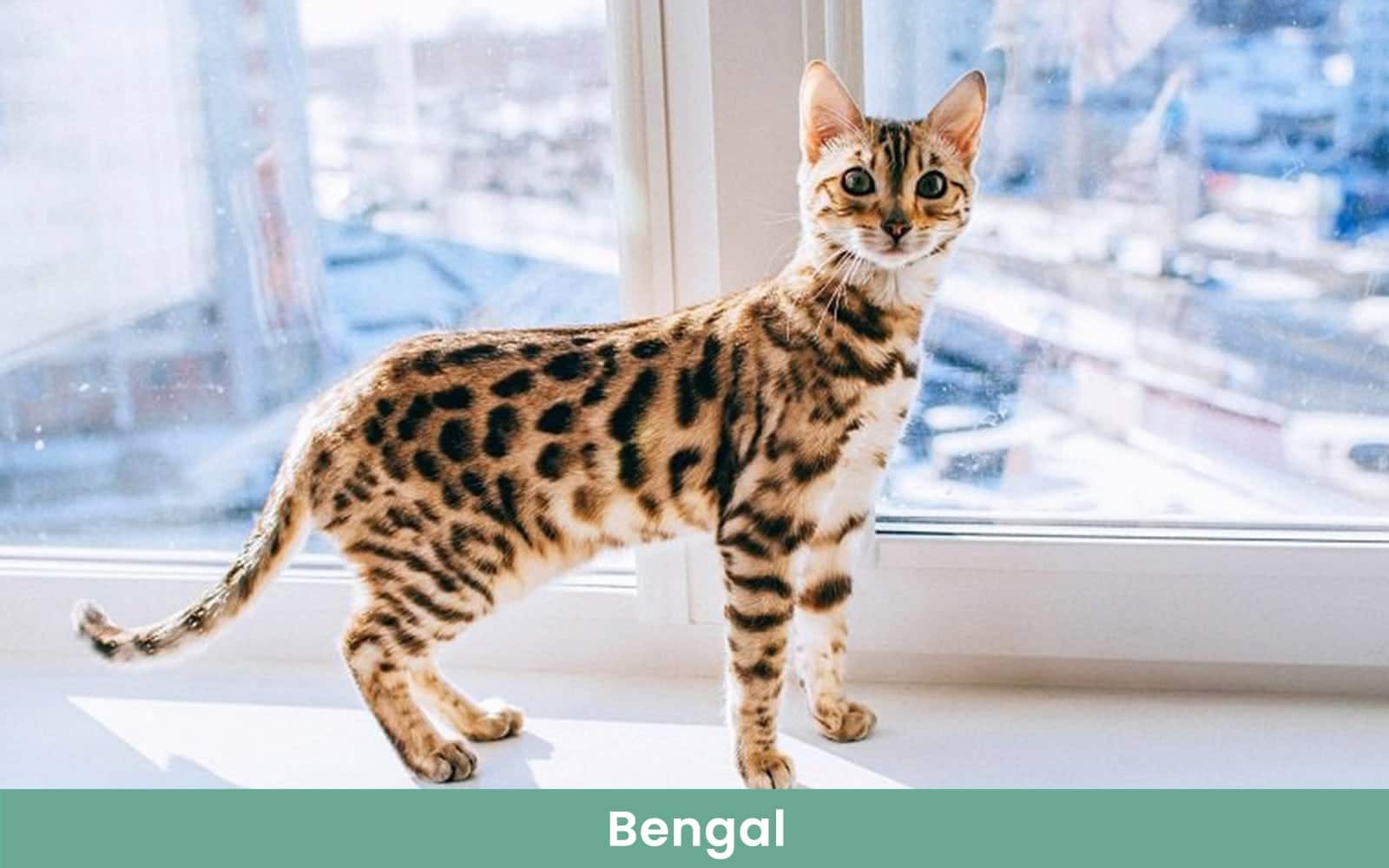
It’s a well-known fact that most cats abhor water. They’ll do anything they can to stay away from it. But the truth is, this trait isn’t common in all cats. Most cats definitely don’t like water, but the following breeds tend to be attracted to it!
So, What Breed Is Your Cat?
Determining your cat’s breed can be a very difficult task. Using the criteria we’ve outlined, you have three methods that you can follow to hopefully uncover your cat’s lineage.
Take your results from the above and list the traits we’ve covered that your cat displays and type them into your computer’s search bar.
Example Search: Cat breed + calm + large + short fur + tan + colored points
Alternatively, you can use the breed lists we’ve included with each trait discussed. If there’s one particular breed on the list for every trait your cat displays, there’s a high likelihood that your cat belongs to that species.
The search results you get back may not be definitive but will surely point you in the right direction, and if your cat is a mixed breed, they may have ancestry found within all the breeds listed in your search results.
Genetic Testing to Tell Your Cat’s Breed
Even if you follow the guidelines we’ve laid out, you can’t be 100% sure of your cat’s breed without genetic testing. Genetic testing will dive into your cat’s DNA to determine their genetic makeup, giving you an accurate answer about the breed or breeds that make up your cat.
This is especially useful for mixed-breed cats. You can often identify a purebred cat’s breed by its traits. But mixed-breed cats can show traits from several breeds, making their lineage much harder to pinpoint. Genetic testing can get around that quite easily, though.
If you’re interested in learning more about genetic testing, your veterinarian should be able to help you. An added benefit to genetic testing is that it will tell you much more about your cat than its breed. You should also learn a lot about your cat’s health, including any potential health concerns that might arise down the line and warrant extra precautions being taken in the meantime.
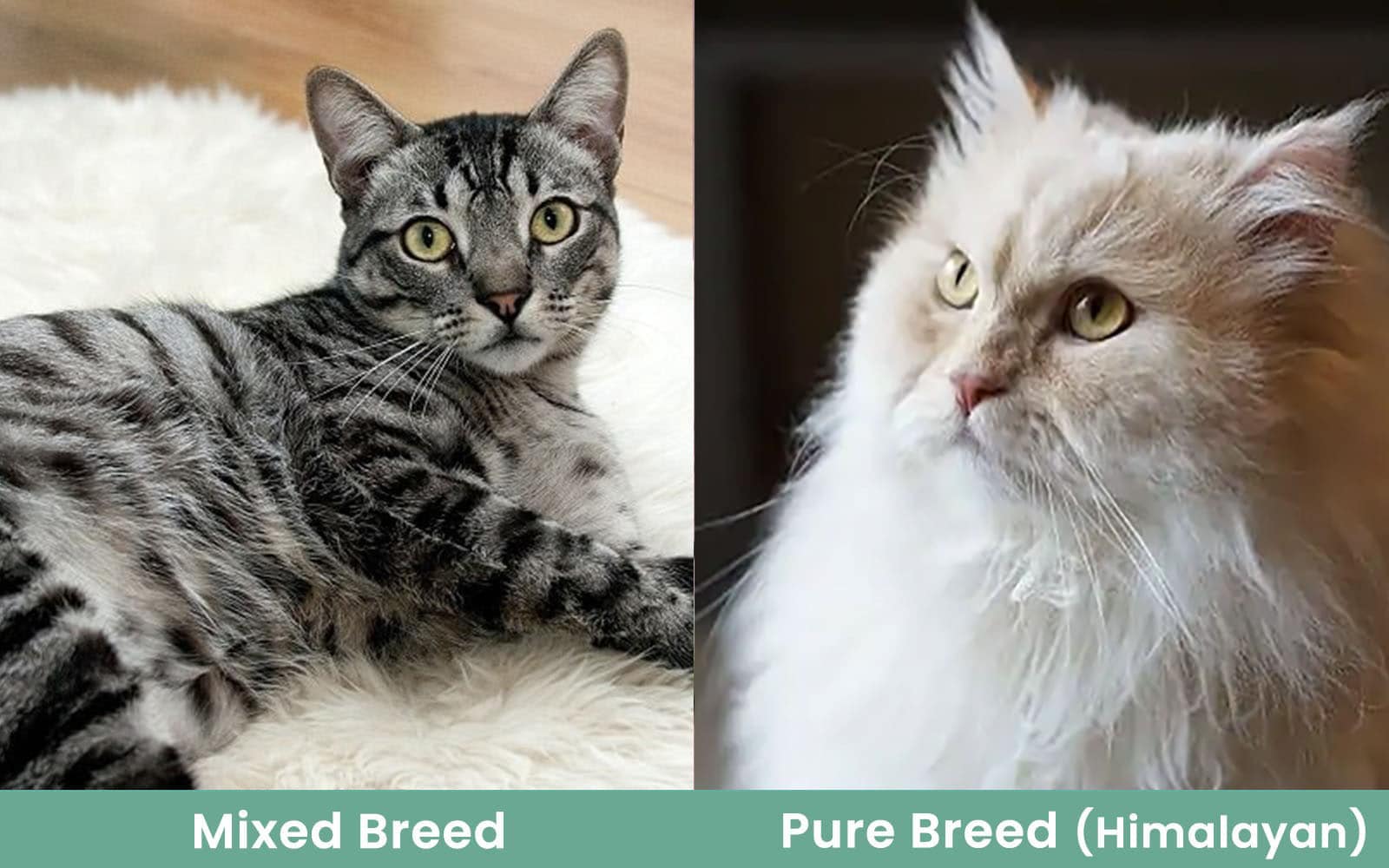
Conclusion: What Type of Cat Do I Have?
With more than 70 officially documented cat breeds, guessing your cat’s breed can be tricky. Using the traits and characteristics covered in this article can give you some great clues and simplify the process. Cats of just one breed can often be identified in this manner. Mixed-breed cats will be more challenging since they can display the traits of several breeds. Do your best to use what you’ve learned here to determine your cat’s breed. But if you can’t quite put your finger on it, you can always take your cat to the vet for genetic testing, which will give you a far more accurate answer than you could determine.
Related Reads:
Featured Image Credit: Pixabay

